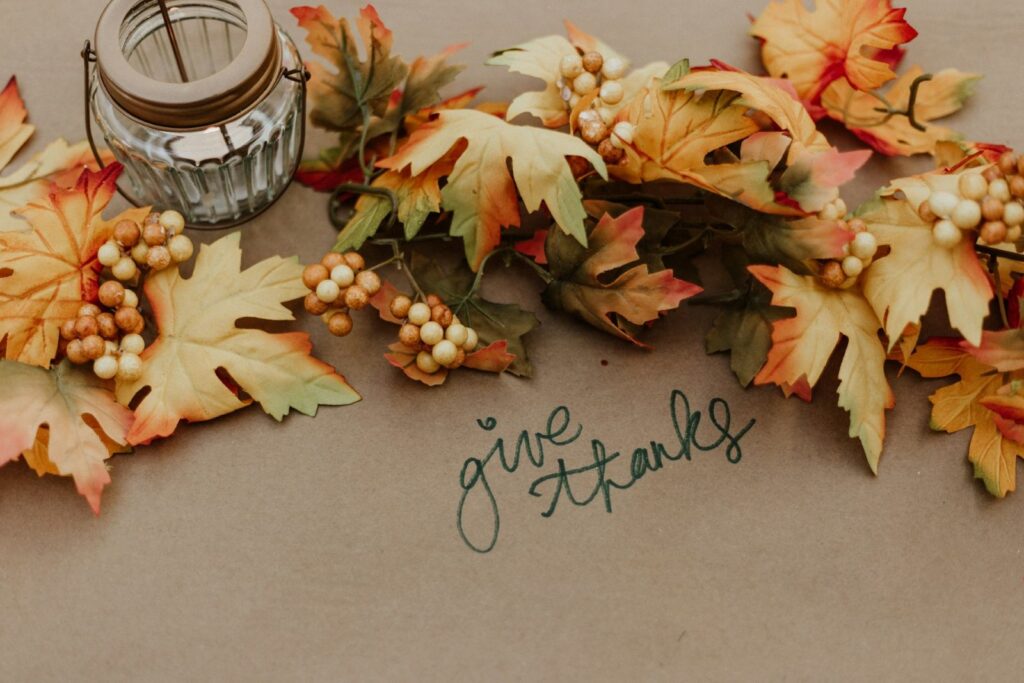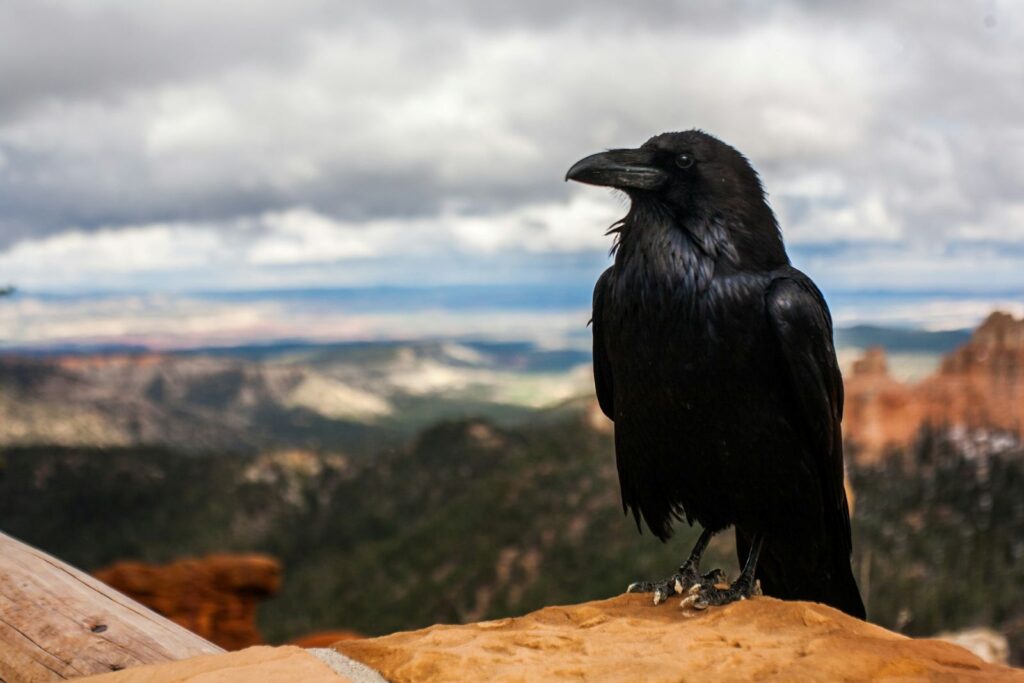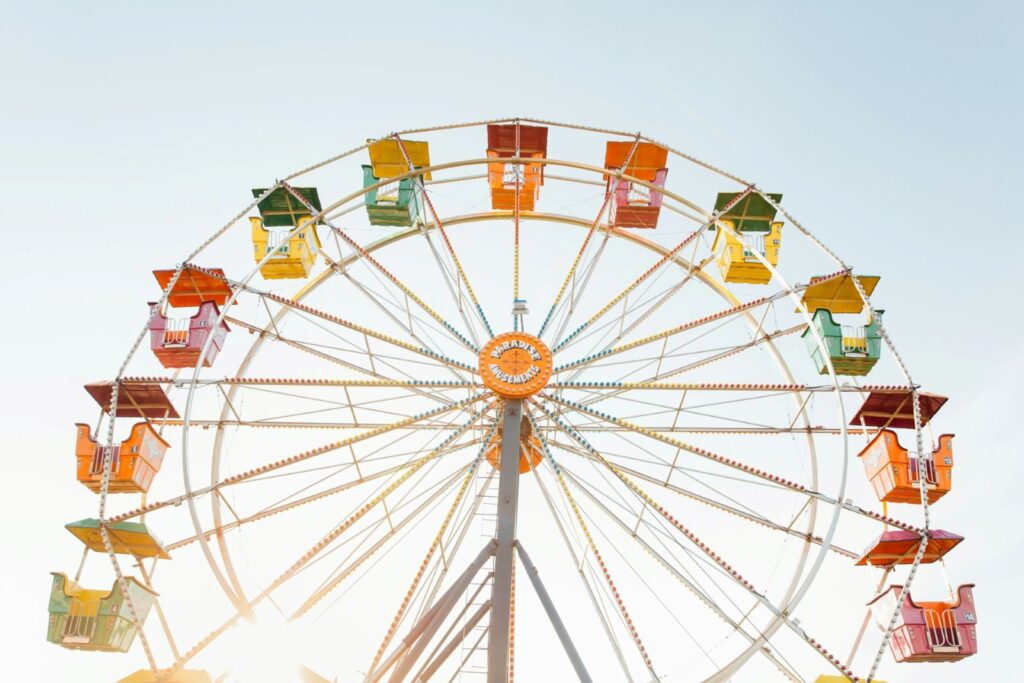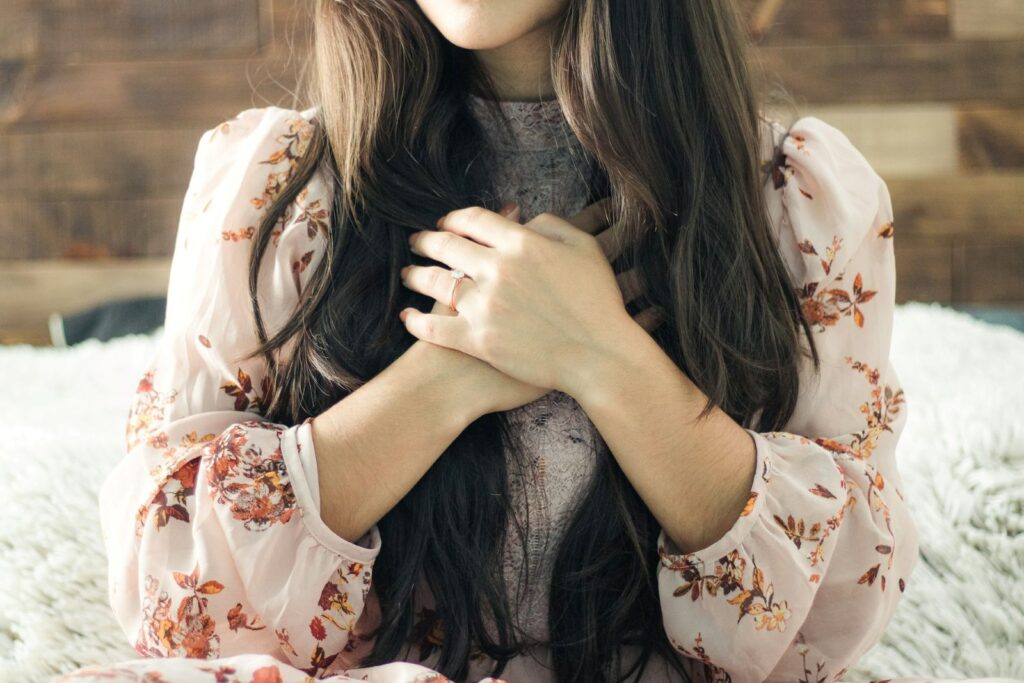You may be tired of hearing about gratitude, but at the risk of overloading you, I want to talk about gratitude. Author and speaker Case Kenny reminded me recently of a powerful way to feel grateful. I don’t know about you, but gratitude can start to feel rote. Like, of course, I’m grateful for clean drinking water and a safe place to live. But do I always feel that in my body? I wish I did, but I do not.
Case said to up the ante on gratitude, think back to when things were challenging and compare that to how things are now. So, remember the time you broke your leg, and you’ll feel grateful you can walk unencumbered. Or reflect on that camping trip where all your belongings got soaked, and you’ll feel grateful you’re not sleeping in a tent.
As for me, I’m feeling grateful for something as simple as being able to sit upright. Last Monday, I was hit with the worst case of vertigo of my life. If you’re unfamiliar, vertigo means you’re dizzy and the entire room is spinning even though you’re not moving. For some people, like me, their eyes dart back and forth uncontrollably when they sit or stand. There’s no medication for vertigo because the issue is with the inner ear. When an ear crystal, which controls balance and orientation, gets dislodged, you experience vertigo.
The solution is to reset the inner ear with various maneuvers. Well, I tried all those maneuvers and they didn’t work. So I spent 16 hours lying in bed because I couldn’t move without the world spinning. It was so bad that I couldn’t refill my water glass or get anything to eat. It was so bad that even though a few people offered to come over to support me, I couldn’t leave the bed to unlock the door.
After tossing and turning the entire night, the ear crystals reset. I’m still recovering – my head and neck tried really hard to stabilize so they’re stiff and sore – but thankfully, the vertigo is gone. I didn’t think I’d be grateful for something I take for granted literally every day, but I am. I’m reminded of how easily I could be incapacitated, of how fragile the human body is, and so today, I’m grateful.
Gratitude is also on my mind not because we recently celebrated Thanksgiving here in the U.S., but because it’s my birthday on December 1. As I get older, I’m constantly reminded that nothing is promised. There’s no guarantee that any of us will reach a certain age, and so every year truly feels like a celebration.
What’s interesting is that my last birthday was emotionally fraught because I turned the big 4-0 and my life didn’t (and doesn’t) look how I thought it would. I had so many feelings about hitting that milestone, and this year, things feel simpler. This year, I’m just enjoying that I’m here, that I’m alive, and that I’m loved. Not only is that enough, it’s everything. So yeah, I’m grateful. And I hope you find something to be grateful for, too.
I dream of a world where we reflect on when things went wrong so that we’re grateful when things go right. A world where we feel grateful for the smallest things because we recognize there are no guarantees in this life. A world where we practice a new way to give thanks.
Another world is not only possible, it’s probable.
I do plan to write original content again but today is not that day. This post is from August 2024. Normally, I don’t like to recycle content written in the past year, but what’s most true for me right now is the need to be where I am, and the need to go slow. Enjoy.
An emotion I feel frequently is frustration, and it’s usually because people and situations aren’t moving as fast as I’d like. I don’t mean literally – I’m not a speed demon – I mean in terms of actions. A frequent complaint I have is, “Why is this taking so long?” That’s everything from a person returning my telephone call to becoming a bestselling author. I want everything yesterday. The whole “waiting” thing is a ripoff, if you ask me.
Given my penchant for moving quickly, it should be no surprise that the universe gives me plenty of opportunities to practice patience. I’ve written dozens of posts about patience over the years, including earlier in the year when I wrote about the future unfolding. I know that things bloom when they’re ready, and we’re looking at our watches while God is looking at the calendar. But even with all those posts, I still want things to move quickly! This might also be a good time to mention it’s taken me three times as long to write this post as my other ones, and that even writing a post about it being OK to go slow, I want to go fast. And not only do I want to go fast, I want to be somewhere I’m not.
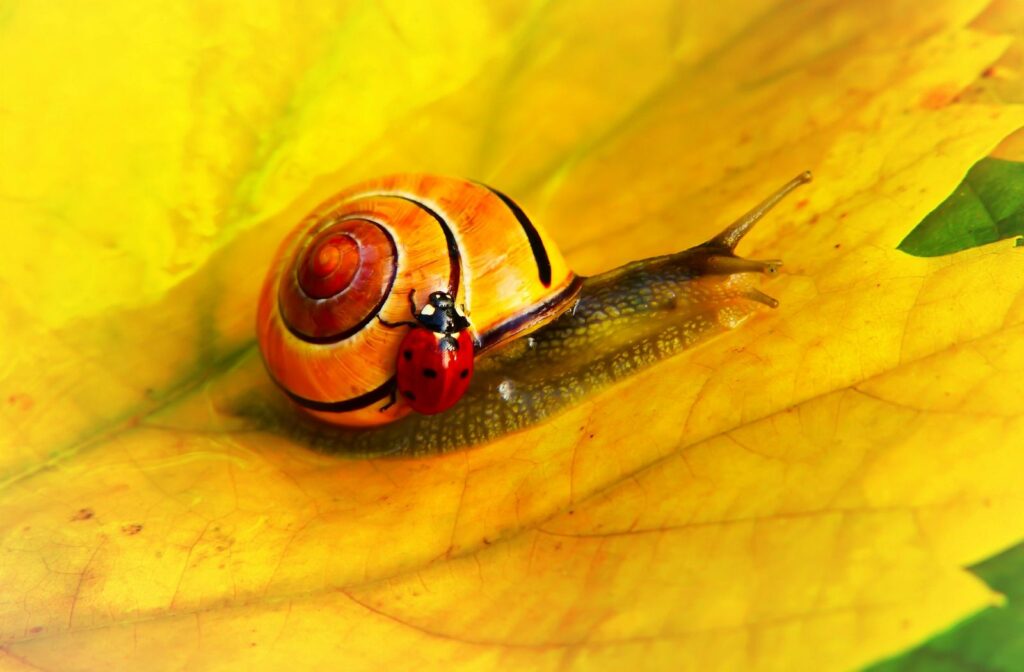
A snail AND a ladybug! It’s OK to go slow. Photo by Krzysztof Niewolny on Unsplash
I’m struggling with what to say, but when I let my writing flow in the form of a letter, the words poured out. Here’s a letter to me from my Great Self, but maybe your Great Self wants you to hear it too:
“I know you want everything yesterday. I know nothing moves as quickly as you’d like. You see the endgame, you know how things could be. It’s one of your gifts to dream, to imagine. It’s the creative spark that lives within you, seeking expression. You have an active mind and that’s one of the best things about you.
“It’s easy for you to make big jumps, to go from A to Z very quickly but not everyone else is like that. Other people need to take baby steps. They need to move more slowly. They need time for their brains and bodies to catch up. It’s OK for you to match their pace, it’s OK for you to go slow. It’s OK for you to rest and relax and know that everything is going exactly as it should at the pace it should. That includes your emotional states.
“What I really want you to know is you aren’t alone; you aren’t doing all this by yourself. It’s not your self-will that’s making things happen. It’s you matching the universal, Cosmic rhythm. It’s you syncing your desires with the Cosmic desires. It’s the outside world pouring into you, supporting you.
“When you want to rush, think about the natural world. You may want to harvest blueberries right now, but you have to wait for a bud, then a bloom, then a blueberry. The natural world knows how to move slowly. It’s the human world that does not. It’s people who say you should have this accomplished by this age, and if you don’t, you’re a failure. It’s the human world that touts overnight successes and doesn’t honor the people who write four books before they publish a bestseller. It’s the human world that tells you that you should be moving at a pace other than the one you’re moving at.
“All of nature is here telling you it’s OK to go slow, to be where you are, that you can take all the time you need. Rest, be gentle with yourself, and know there’s nothing shameful or wrong about incrementally working toward the things you want. That’s usually how it happens.
“Remember that your spiritual teacher says, ‘Suppose, immediately after planting some saplings and seeds, someone digs them up to find out if they have taken root or sprouted. That would not be considered wise.’
“Sometimes you have to wait for your desires to be expressed, but there’s nothing wrong with that. It’s natural and the way the world works. You’re doing great and even though you don’t believe it, all is well, my dear, all is well. Go as slow as you need to go. What is meant for you will not run past you. Trust that. And trust that you are exactly where you need to be.”
I dream of a world where we remember it’s humans who tell us to rush and go as fast as possible. A world where we understand nature models slow and steady progress. A world where we recognize it can take a while for our dreams and desires to sprout but that doesn’t mean they aren’t blossoming. A world where we remind ourselves it’s OK to go slow. A world where we let ourselves be where we are.
Another world is not only possible, it’s probable.
We’re still in a time machine this week. I’m noticing I’m slowly chipping away at the obstacles before me, and this post from December 2018 gives me hope. May it do the same for you.
When I thought about what to write this week, the image that kept coming to mind was a sea wall battered by waves. That’s a lot of what 2018 felt like to me – ceaselessly buffeting an immovable object until finally the object disintegrated. That’s what happens to sea walls – they must be replaced every 30 years or so, depending on how well they’re constructed.
I haven’t fully processed everything that happened to me this year. It still feels surreal that issues I battled for so long are suddenly gone. It’s strange to no longer feel the weight of them like an anchor around my neck. But obstacles are like that – if we keep battling them, eventually they evaporate. When people said that to me at the beginning of the year, I didn’t believe them. Instead, I rolled my eyes because it felt like my obstacles were insurmountable, that I’d be dealing with the same things for years to come.
And now here I am at the end of the year, and I no longer wake up feeling like a zombie. That probably doesn’t sound like a big obstacle, just go to sleep at a decent hour, right? Except as I wrote in “Minor Miracles,” sleep wasn’t so easy. I consulted Eastern and Western medicine seeking help for sleep, and it wasn’t until late August I found out I have upper airway resistance syndrome. I spent seven solid years with brain fog, low energy, and dread about going to bed. Now, the brain fog is gone, my energy levels are steadily increasing, and going to bed doesn’t fill me with as much trepidation. The obstacle I thought I’d be dealing with until I died is suddenly gone.
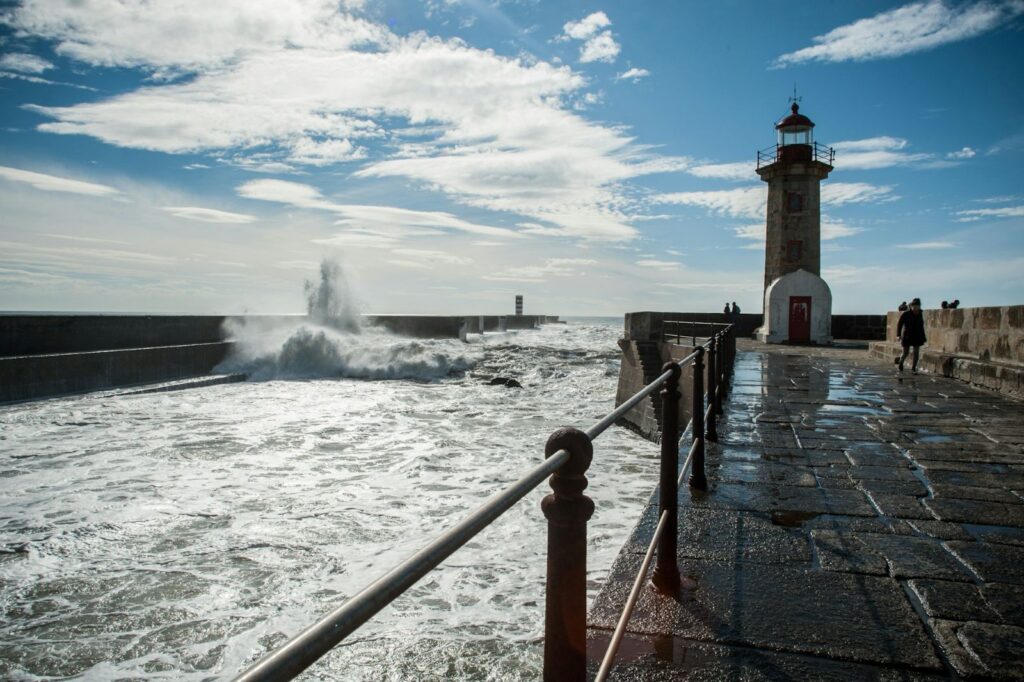
Continuous waves spell eventual collapse for this wall. Photo by Maksym Kaharlytskyi on Unsplash
I can imagine my spiritual teacher giving me a knowing smile. He is a Pollyanna type and says difficulties can never be greater than our capacity to overcome them, and that we’ll overcome all obstacles. He doesn’t allow for any possibility of defeat, even if it takes lifetimes. When I consider a sea wall, I wonder if perhaps his view is more realistic. There’s no way a sea wall can withstand the constant pressure from the sea, the wear and tear of salt, sand, and sun. There are too many elements at play.
Maybe we human beings are like that. Maybe there are multiple unseen forces at work in our lives, acting like the salt, sand, and sun that mean we, too, will be victorious. I don’t want to make it seem like overcoming obstacles is easy, because it’s not. But this year has given me a new appreciation and a new understanding for scaling them. When we do the slow and steady work, eventually the obstacle must collapse.
Sometimes we think things won’t change, or that impediments are too vast, but if we keep doing the work, if we keep putting one foot in front of the other, eventually the sea walls come down. May we all remember the power of persistence and carry it with us in the months and years to come.
I dream of a world where we recognize the power we all have. A world where we understand the truth about obstacles. A world where we remember if we keep chipping away at whatever is before us, eventually it will crumble. A world where we understand the power of persistence.
Another world is not only possible, it’s probable.
I don’t have a good reason as to why I’m resharing this post from September 2017 – I didn’t rewatch Hamlet, for instance – but it’s what we call in the journalism world “an evergreen,” meaning it’s relevant at any time. Enjoy.
This weekend, I watched Hamlet with a friend of mine and remarked how the play touched me in a way it didn’t when I was a teenager. I’ve seen Hamlet on numerous occasions, I’ve heard the famous soliloquy a million times, and even unknowingly quoted from the play in this blog.
Hamlet is a story I’m familiar with, but watching it this weekend, I could relate to him; I understood him in a way I hadn’t before. No, my uncle did not kill my father and marry my mother, but I, too, have experienced anger, grief, and despair. As I watched Hamlet this weekend, all I could think was, “Me too.” I wouldn’t have taken the actions he took, but I empathize with his feelings in a way I didn’t before.
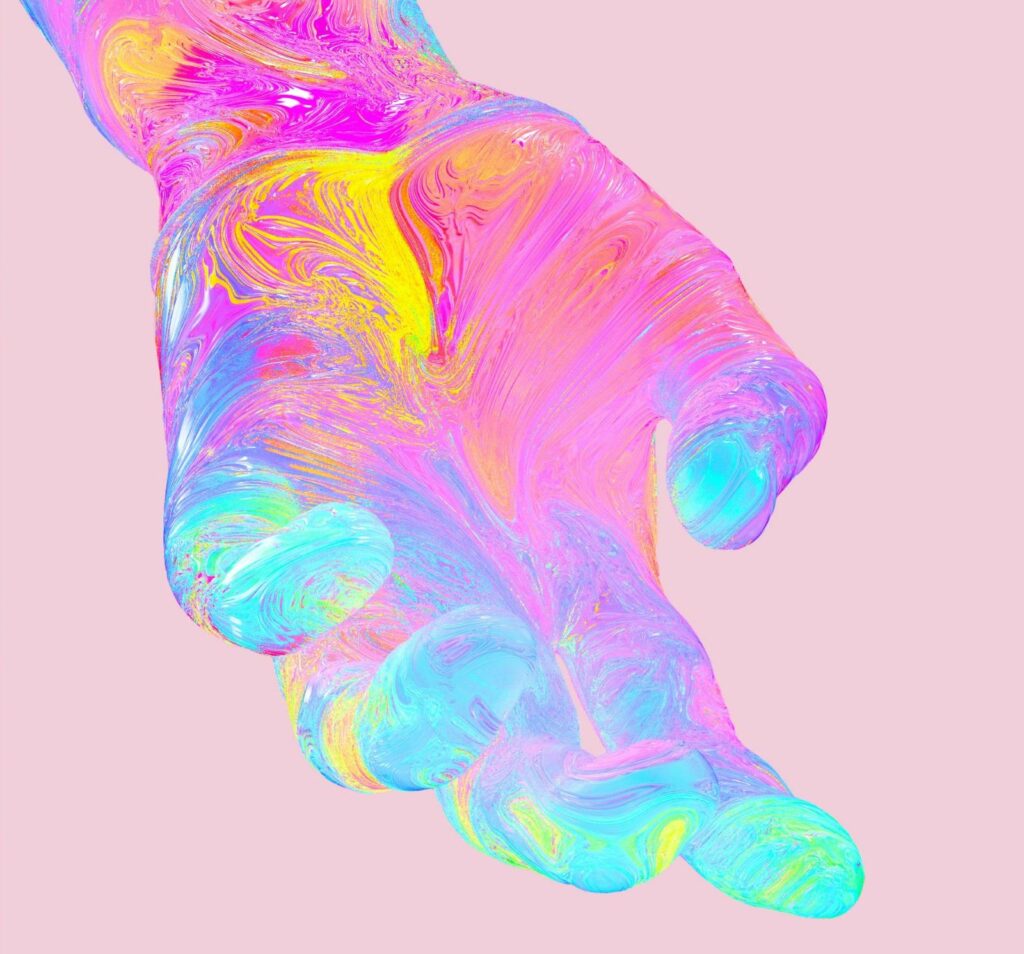
We all feel the same things. Photo by Maxim Berg on Unsplash
I’m reminded of that quote by Maya Angelou, who said, “We are all human; therefore, nothing human can be alien to us.” Yes! I’m not a scholar, but it seems to me Shakespeare’s work endures because he taps into the essence of what it means to be human, with all the pain, glory, comedy, and tragedy. One minute, Hamlet is contemplating suicide, and the next, his friends burst through the door, talking and laughing. That’s certainly how my life is. I think I mentioned it here, but literally the day after I found out my co-worker died, I unintentionally participated in a wedding held in my neighbor’s backyard. My windows were open, so the sounds of the ceremony wafted through the air. Life is tragic and comic, something Shakespeare understood and illustrated.
Even though he wrote his plays hundreds of years ago, they’re still relevant. There is no emotion anyone has ever felt that I haven’t felt too. Our experiences? Highly variable. Our emotions? The same. I bring this up because I wonder how things would be different if we all held this viewpoint. Instead of calling Mexicans rapists like a certain high-ranking official, instead of calling people aliens, what if we recognized that we are all human and thus nothing human can be alien to us?
My spiritual teacher said:
Human society comprises various races. There is no reason whatever to recognize one race as superior to another race. The external differences in constitutions among these human groups cannot alter their basic human traits – love and affection, pleasure and pain, hunger and thirst. These basic biological instincts and mental propensities equally predominate in human beings of all complexions in all countries and in all ages. A mere rustic, illiterate, half-naked tribal mother of an unknown hamlet … in India bears deep maternal affections for her young children; in the same way, a well-educated mother of a locality of New York pours out of her heart a great love for her own children.
The subterranean flow of love and affection exists in all hearts alike. Every person cries out in pain, everyone feels pleasure when there are occasions of joy and happiness. [F]undamentally, their mental existences flow along the same channels of ideas and consciousness. Containing the same cosmic momentum and under the same cosmic inspiration, they all have set out for a tryst with the same destiny.
That means we have more similarities than differences. We are all like one another. We are all human, and we’d do well to recognize that.
I dream of a world where we recognize we all have the same human emotions. A world where we remember there is nothing anyone can feel that we also haven’t felt, and vice versa. A world where we understand we aren’t so alien from each other, and in fact, humans aren’t aliens at all.
Another world is not only possible, it’s probable.
On Saturday, I visited my old San Francisco neighborhood for the first time in years. It was weird to compare what it used to look like to what it looks like now. It was also strange to be there and remember the person I used to be. My friends asked me if I missed living in the city, and the truthful answer is no.
It’s funny because in 2012, when I began my period of moving on average every three months for three years, I cried buckets over no longer being in SF. It was a heartbreak on par with a breakup. I’d spent ages longing to move to San Francisco, dreaming about it, imagining what my life would be like, and then when I arrived, it was the culmination of a dream. I loved being in the city. I loved the convenience, the ease, the energy. I woke up every day grateful I lived in San Francisco.
And then, the universe basically forcibly removed me. My dream became a nightmare. My building put up scaffolding to paint the exterior, and I kept telling management I was worried someone would break in. And guess what? They did! Not to my apartment, but still. And then, because of the paint job, my windows were covered so I couldn’t even see outside, and barely had any sunlight. Add in not sleeping through the night, and it was truly a waking nightmare.
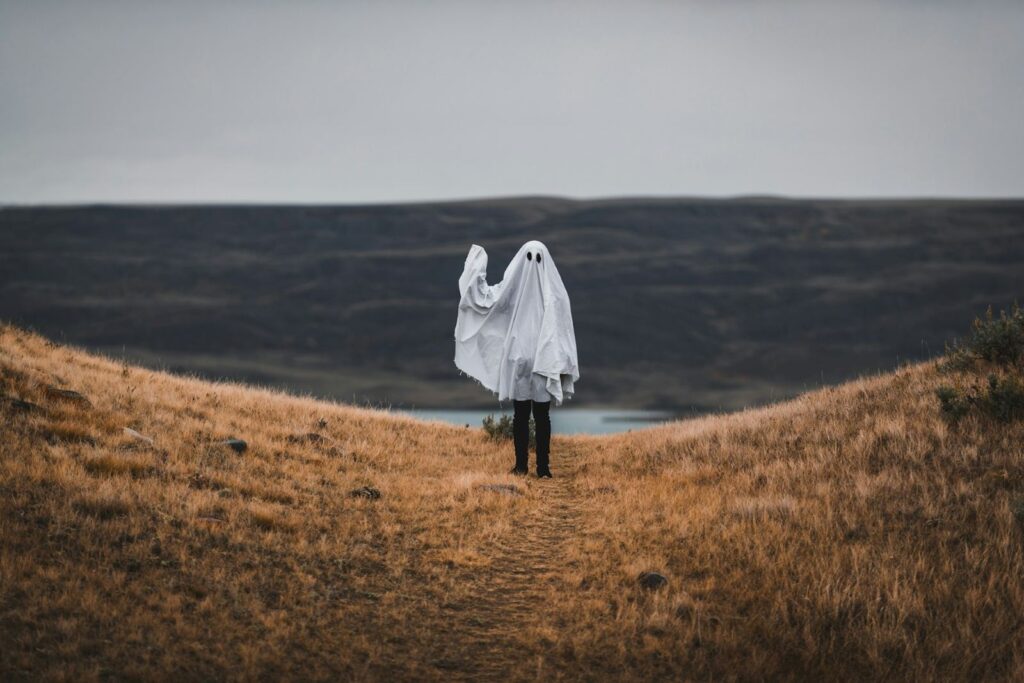
Hello past self. Photo by Tandem X Visuals on Unsplash
I left SF, but I wasn’t happy about it. I wrote poems about it, longed for the life I had, but kept moving forward. And now, I’m so changed that whenever I return to my old neighborhood, it’s like those feelings, that life, belonged to someone else. It’s like I’m confronting the ghost of my past self. That makes sense given what my spiritual teacher has to say about death and change.
He says, “A 5-year-old child is transformed in due course into a 15-year-old boy. In 10 years, the child becomes the boy. Thereafter, you will never be able to find the body of the 5-year-old child. So the child’s body has certainly died.” He then goes on to mention the boy growing into a man, and then hitting middle age, then old age, until he finally dies and says, “The rest of the changes we do not call death; but in fact, all the changes qualify as death.”
All the changes qualify as death because the person who used to exist cannot be found anymore. That’s me. I have died many times and will do so again. And it’s true for all of us. We’re constantly undergoing a metamorphosis. We’re constantly dying and being reborn. We all have many “ghosts” walking around. The people we used to be, and aren’t any longer.
Normally, I’d feel sad or tender about that, but it can also be something wistful or neutral. I have gratitude and appreciation for my past self, for the young woman who so desperately wanted to move to San Francisco and did. But I’m not that person anymore. These days, I have new dreams, new desires, and new selves to meet. And I’m sure that one day in the future, I’ll look back and think of this current self as a ghost, too.
I dream of a world where we recognize change is constant, not only in the world but in ourselves. A world where we understand that we will all die many times while we live. A world where we recognize there are many ghosts of our past selves walking around.
Another world is not only possible, it’s probable.
I, like many, have been amused and surprised by the Louvre heist. As a quick refresher, at 9:30 in the morning, thieves in yellow vests scaled a truck-mounted ladder to the second-floor balcony of the Apollo Gallery, home to the French crown jewels, among other treasures. Using an angle grinder to force open a window, they took just four minutes to enter the room, cut open two cases displaying Napoleonic jewels, grab nine pieces, and flee back down the ladder, according to CNN.
Instead of focusing on the heist itself or the ethics surrounding museum acquisition, theft, etc., I want to talk about why I think the story is so compelling. The museum heist is giving major trickster energy. The trickster is an archetype that crosses and often breaks both physical and societal rules. Tricksters “violate principles of social and natural order, playfully disrupting normal life and then re-establishing it on a new basis,” according to author Lewis Hyde.
There are many myths about the trickster from Indigenous tribes, often centering around coyote, spider, or raven. Here’s an abbreviated version of a story about Raven demonstrating how the trickster often makes things better for everyone:
Raven was told of a well with a never-ending supply of water. When Raven arrived, it learned the man who owned the well kept it covered and never left its side. He even built his house around the well and slept by it so that no one else could drink from it. But Raven began to scheme how to get this water.
Raven disguised itself as the man’s brother-in-law and went to the man, telling him he would stay the night with him. Both went to sleep, and in the early morning, Raven left and procured dog dung that he put on the sleeping man’s butt. Raven woke the man and showed him the “accident” he had in the night. The man, embarrassed, ran out of the house to clean up. While he was away, Raven drank nearly all the water, but he was caught when the man returned. Raven escaped and flew over the land, spitting water here and there, creating the great rivers of the world.
This is the myth certain Indigenous tribes use to explain the presence of great rivers, and while in this case the Raven did something good for all of humanity, I’m not sure that’s true for the museum heist. But what interests me about the trickster is many Indigenous communities think tricksters are essential, that they help us contact the sacred. Even in sacred ceremonies, tricksters are embedded in the ceremony and mock people, make crude jokes, and crawl down ladders headfirst. They do this because these communities say the sacred comes to us through upset, reversal, surprise.
Until I listened to the Emerald Podcast, I’d never heard of that concept, but it’s so true. Some of my biggest periods of transformation arrived on the heels of upset, reversal, and surprise. I want life to go according to my plans. I want things to be neat and orderly, but they never are. What if instead of fighting that, I accepted it? What if I made space for disruption because it’s going to happen anyway? We like to pretend it doesn’t or won’t but the museum heist, the political situation, heck, even the weather, demonstrate that disruption is not the exception, it’s the norm.
For me, welcoming the trickster means accepting upset, reversal, and surprise are a part of life. Just as life is a wheel, it’s also surprising. I don’t want to keep fighting that aspect or pretending I’m in charge or in control when I’m so clearly not. This is one of the biggest spiritual lessons I’ve had to learn over and over again: surrender. For today, surrender means not only accepting that the trickster is a part of life but actively welcoming it and saying, “I’m making space for you.”
I dream of a world where we understand things never go according to plan and they aren’t supposed to. A world where we recognize the trickster is an archetype for a reason. A world where we understand the sacred and profane are the two wings of one bird. A world where we welcome the trickster.
Another world is not only possible, it’s probable.
I can say unequivocally that “happily ever after” has screwed me up. A young part of me latched onto the idea that if I just do xyz, I’ll be happy forever. No more tears, no more sadness, no more hard moments – just frozen in a perpetual state of happiness until I die. We’re sold this narrative over and over again, but, well, life isn’t like that.
My spiritual teacher says, “Here in the universe, nothing is stationary, nothing is fixed. Everything moves; that’s why this universe is called jagat. Movement is its dharma; movement is its innate characteristic.”
Movement is the innate characteristic of the universe. Nothing is stagnant or static or stale. That means life itself also moves. Instead of a destination, someplace to arrive, life is like a wheel – there are ups and downs. Moments of contentment and boredom. I’ve been incredibly focused on happiness, but what if I accepted that’s not possible because there’s only happi-er, not happi-ness?
I haven’t read the book; I’ve only listened to interviews about it, but Oprah Winfrey and Arthur Brooks wrote “Build the Life You Want.” It’s a mix of scientific research, personal stories from Oprah, and actionable strategies. Something they say is, “Happiness is not a feeling.” We think it is, and then we chase after that feeling, but it doesn’t work. In part because of something called “hedonic adaptation,” which means we revert to our happiness baseline after a spike – for instance, getting a raise at work. It’s no longer the thing that makes us super happy – it instead becomes something normal.
Also, thinking happiness is a feeling means happiness will always be dependent on external circumstances. It puts us into the position of a reactor to life instead of an actor. What Oprah and Arthur emphasize is happiness is not the goal and unhappiness is not the enemy. I’m going to say that again: unhappiness is not the enemy, yet we often think it is. If we’re unhappy, we want to change it, do something, but it’s just as important to learn and manage the unpleasant emotions as it is to savor the pleasant ones.
Rather than escaping certain emotions, it’s better for us to learn from them because life is a wheel. We cannot outrun fear, anger, and sadness, no matter how hard we try. That doesn’t mean we’re doing something “wrong,” it just means we’re alive. How do we feel happier? According to Oprah and Arthur, becoming happier means relishing little joys, investing in friendships, serving others, having difficult conversations with people, finding purpose, and developing faith in something larger than yourself.
As for me, feeling happier starts with throwing “happily ever after” out the window and reminding myself life is a wheel – constantly moving, ever changing. If I’m not enjoying how I feel, I just need to wait a minute and I’ll likely cycle through something else.
I dream of a world where we recognize there is no happily ever after. A world where we understand happiness is not a feeling we can chase but rather an exercise in growth and development. A world where we realize unhappiness is not the enemy. A world where we accept that life is a wheel.
Another world is not only possible, it’s probable.
I was never a Girl Scout but you’d think I was because I’m always prepared. Not only do I have an earthquake kit, I also have a camping stove so I can still eat cooked food in that circumstance. If you need something, I probably have it. One time, I was in the car with someone who realized her food was undersalted, and I literally pulled out a mini salt shaker from my purse. Why am I like this? Because thinking ahead, preparing, and planning make me feel safer.
Sometimes this strategy works (i.e., preparing for an earthquake), but often it’s a waste of time because I imagine scenarios that never happen and conversations that never take place. Essentially, I try to predict the future so I can feel safe in the present. The thinking goes, “If I know what will happen, then I won’t be surprised, and if I’m not surprised, I’ll feel safe. I’ll be able to handle the situation.” But, well, I’m terrible at predicting the future. Even something as small as, “This is what I’ll be doing next week.” Over and over again, life throws me into unpredictable scenarios and situations.
A constant lesson lately – maybe it’s lifelong – is to stay present. Not only is joy found in the present, but safety, too. When I’m present, when I’m here, now, I can respond to what’s before me from a cool, level-headed place. It guards me against reactivity. When I’m present in the here and now, I’m accessing the wise self, the one who knows what to do. It’s tough because my default mode is to “future trip” or worry and obsess about the future.
Again, I do this because I want to feel safe. It’s not a character flaw – it’s a coping strategy. But what I’m learning is there are better ways to cope. Instead of imagining what I’ll say to so-and-so or contemplating whether XYZ will happen, I’m coming back to me. It’s better for me to say to my inner child – because let’s be real, it’s usually her who is freaking out – “I’m here. I’m not going anywhere. I’m not ever going anywhere. I can handle this. You don’t need to worry about it.”
Even typing that I exhaled deeply, which is a sure sign that I’m relaxed and regulated. Relaxed and regulated equals safe. When I don’t feel safe, my breathing is fast and shallow; I’m not grounded, and not in my body. And that brings me to my next point – what I’m learning is that safety is something that must be felt in the body by bringing in the body.
Gabor Maté says, “Safety is not the absence of threat; it is the presence of connection.” Sometimes that means being connected to others, but sometimes that means being connected to the self. I can’t control what other people are doing, but I can control what I’m doing. I can connect with myself not by spinning out about future scenarios but by being here, now. I can connect with myself by putting my hand on my heart and talking to myself like I would a friend. I can connect with myself by letting my exhales be longer than my inhales.
I care a lot about safety and what I’m learning is that it only exists in the present. And furthermore, it only exists if I’m connected – to myself, to others, and to the Divine Beloved. May you also experience that connection, if you so wish.
I dream of a world where we understand we can’t always think our way into safety. A world where we understand we can prepare for some things but not others. A world where we recognize safety happens in the present. A world where we let ourselves feel safe by connecting.
Another world is not only possible, it’s probable.
I watched a clip of Netflix’s “Famous Last Words: Jane Goodall” and started tearing up. That woman was an icon, a messenger of hope, and someone who remained consistent until her dying breath. She exemplified neohumanism, a concept in my spiritual tradition, that begs the question, “What is the boundary of your identity?”
Neohumanism encourages bridge building not only with other people, but also with plants and animals. For Jane, she saw animals not as heartless brutes, but as beings that have rich inner lives just as humans do. They cry, experience joy, and have other emotions. From a Mongabay news piece I read, “She blurred the categorical wall that placed humans above other animals. Her work became foundational not only for primatology, but for animal welfare and environmental ethics.”
But she wasn’t an animal rights activist who said, “Screw all the humans! You’re terrible!” Instead, she tried to connect with people she didn’t see eye-to-eye with. She said, “If you don’t talk to people you disagree with, how can you expect them to change?” She understood that being a purist or isolating yourself from others only creates more isolation, and what this planet actually needs is people working together.
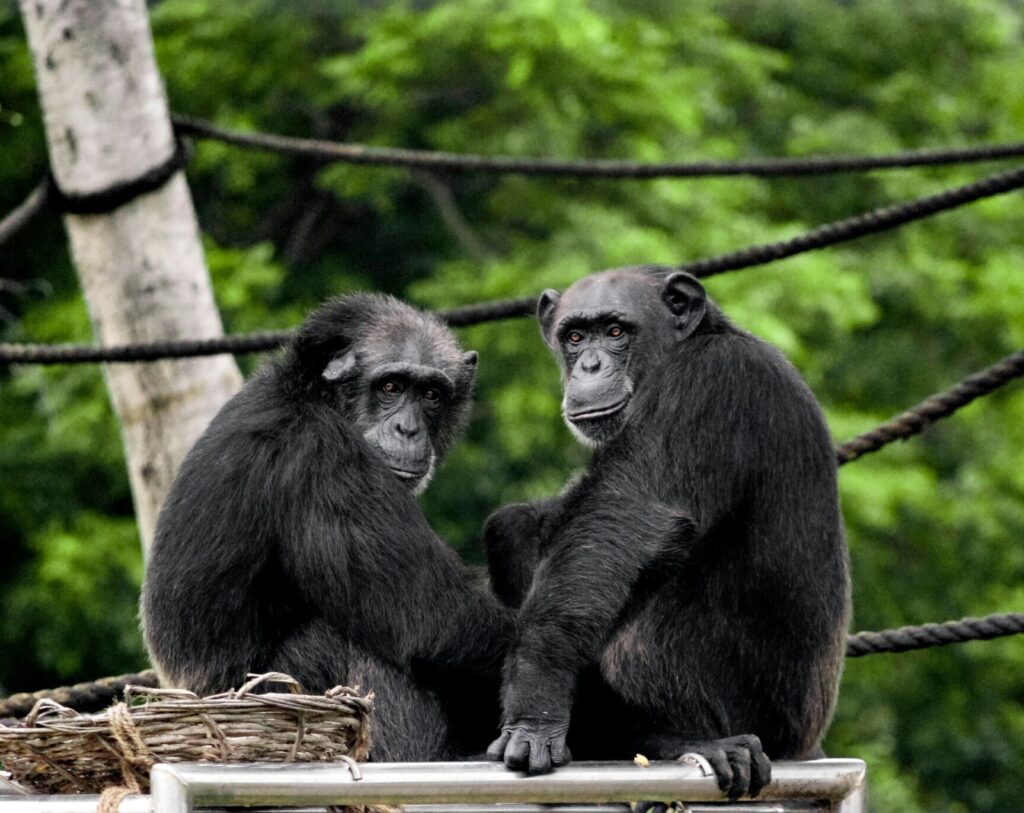
In honor of Jane, of course. Photo by Satya deep on Unsplash
Jane also followed up her words with actions by creating Roots & Shoots, a youth action program that empowers young people to be the change in their communities. It spans more than 140 countries and has projects ranging from recycling drives and community gardens to tree-planting campaigns and animal rescues. Underpinning the youth movement, and Jane’s ethos in general, is that every action matters.
“You cannot get through a single day without having an impact on the world around you,” Jane often reminded her audiences. “What you do makes a difference, and you have to decide what kind of difference you want to make.”
I keep thinking about that quote, and like I wrote about last week, that each of us has influence even if we’re not an influencer. If we accept it as fact that we impact the world every single day, what kind of impact do we want to have? Some people are hellbent on impacting the world negatively by cutting healthcare access, deporting immigrants, or laying off workers so they can further line their own pockets.
In response to those people hellbent on negatively impacting the world, it feels like everyone and their mother is asking, “How are you working to stop them?” I have idiopathic hypersomnia and panic in crowds, so I’m not capable of being in the streets. I can’t join the protests, the marches, the trainings. And I have a loooot of feelings about that. But that doesn’t mean I’m not impacting the world around me. It doesn’t mean I’m not making a contribution.
I’m not a perfect person. I make mistakes. Sometimes I’m the villain in someone else’s story. But more often than not, the contribution I make is one of kindness, empathy, and authenticity. I may not speak in front of millions, but I’ll chat with a friend for an hour so she feels seen and heard. I may not join a protest, but I’ll show up for my friend’s film premiere. Even though those actions are small, they, too, make a difference. And they’re the sort of difference I want to make.
I dream of a world where we all embody the virtues Jane Goodall emphasized as much as we can. A world where we continue to have hope, show compassion, and see every being as worthy of love and respect. A world where we understand every day we make a difference, and we consciously choose what kind of difference we want to make.
Another world is not only possible, it’s probable.
Typically, I love the Jewish High Holidays because it’s a time of joy and celebration. But this year it’s been somber because of everything happening in Gaza, plus, well, take your pick. Instead of feeling helpless and powerless, I’d rather be in the headspace that we all matter more than we think we do. To that end, I’m resharing this post I wrote for the High Holidays in 2022.
As we’re finishing the Jewish High Holidays, I think it’s only fitting to share a concept I learned about recently. In Jewish mysticism, there’s an idea that in every generation, 36 people hold up the world. These lamed-vavniks do not themselves know they are one of the 36, and no one else does either. What intrigues me about this concept is that it makes each and every person important. Basically, you think of yourself as playing a part in keeping the world spinning, and because you don’t know who else is a “righteous one,” you treat others the same.
I like this concept because it also flies in the face of our current reality. These days, there’s a perspective that if you’re not a billionaire, celebrity, athlete, politician, or influencer, you’re not worth paying attention to. In fact, a Bloomberg study found 98% of middle school and high school students would like to be a social media influencer. Some of them already are. Gone are the days of “doctor” and “lawyer” topping the career list for kids. Now they want followers. I understand, I want followers too, but the concept of lamed-vavniks says you can be powerful and important, and nobody would know about it.
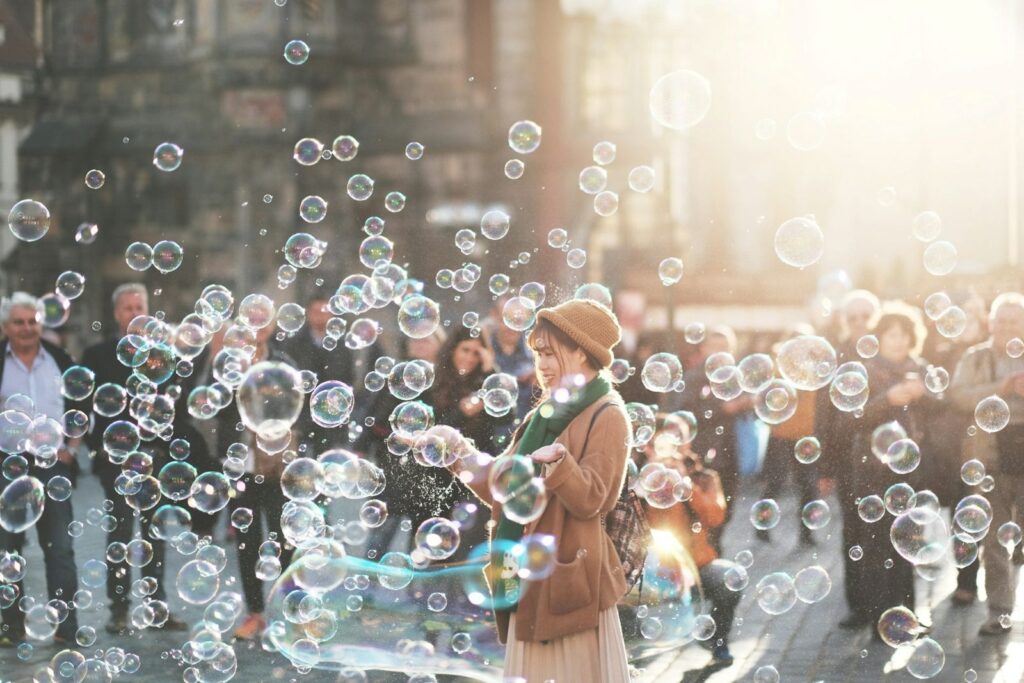
Why this photo? Because I was thinking “circle of influence” and a bubble is like a circle and. . .Photo by Alex Alvarez on Unsplash
In other words, even without being an influencer, maybe you already have influence. Elizabeth Gilbert tells a story about how years ago she was on the Midtown bus in New York. It was January, replete with sleeting wind, rain, and rush-hour traffic. The bus moved at a crawl and people were not happy. When the bus reached 10th Ave, the driver made an announcement.
He said, “Ladies and gentlemen, we are now nearing the Hudson River. I’m going to ask you to do me a favor. When you get off the bus, I’m going to hold out my hand. As you walk past me, I want you to drop your troubles into the palm of my hand. I’ll take your troubles for you, and when I drive past the river, I’ll throw them in. The reason I want to do this is because you all seem like you’ve had a bad day, and I don’t want you taking all your worries and sorrows home to your friends and families now. Because they deserve better than that, don’t they? So, you just leave your troubles here with me to dispose of, and you all go have a wonderful night, OK?”
The entire bus erupted into laughter, and sure enough, one by one, the passengers exited the bus and dropped their troubles into the palm of the bus driver’s hand. They stepped off the bus with smiles on their faces.
The people hearing this story don’t know that bus driver’s name or anything about him, but they do know he made a difference that day. We know he directly influenced the people around him without sending a Tweet. It has me wondering, are you more important than you think you are? Are you someone who is holding up the world in your own way? You can’t know for sure, so why not behave as if you are?
I dream of a world where we all understand the power we have to influence others and make a difference, even if we don’t have a million followers on Instagram. A world where we recognize that sometimes the most ordinary-seeming person is capable of something extraordinary. A world where we understand we’re more important than we think we are.
Another world is not only possible, it’s probable.
